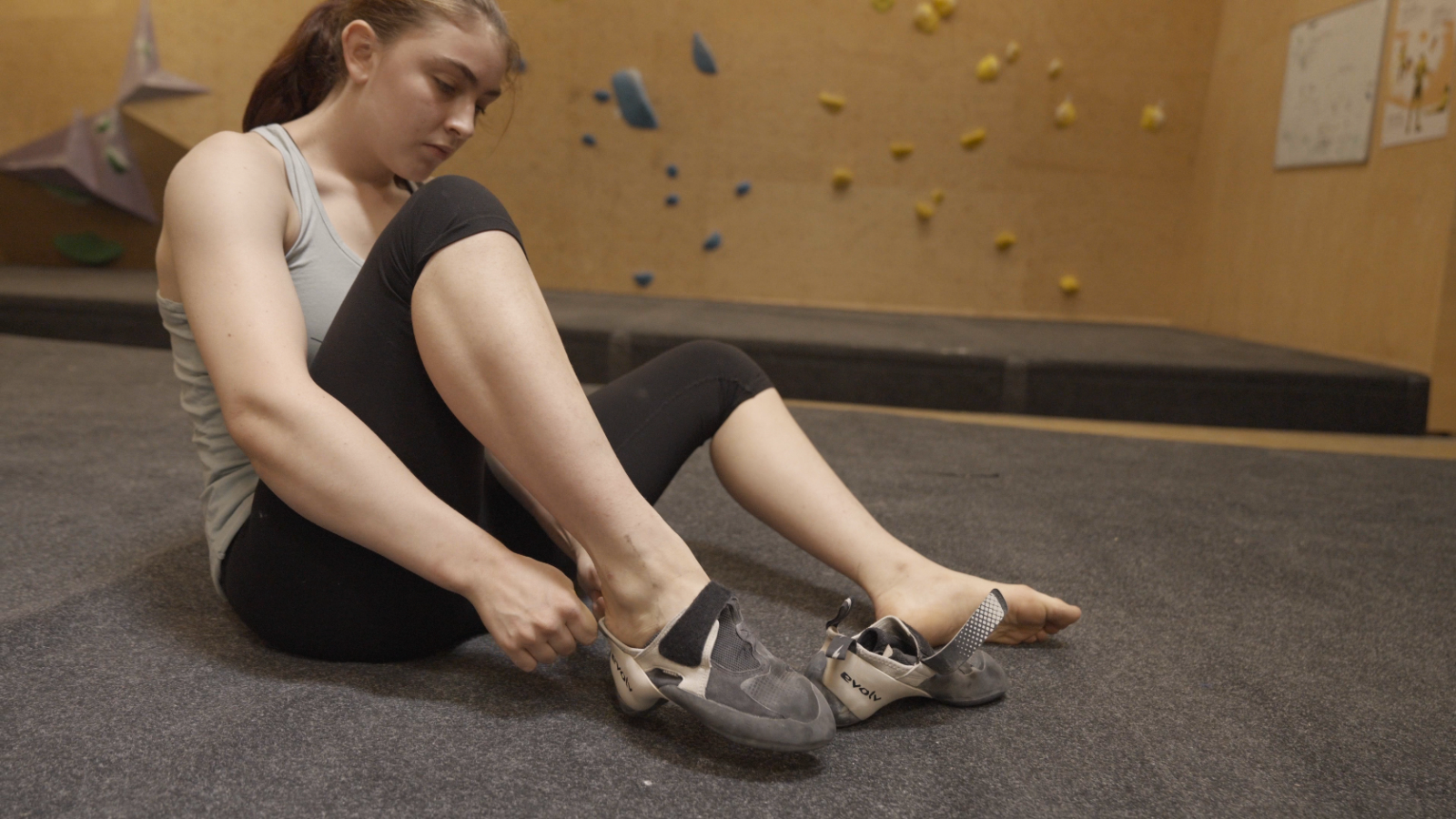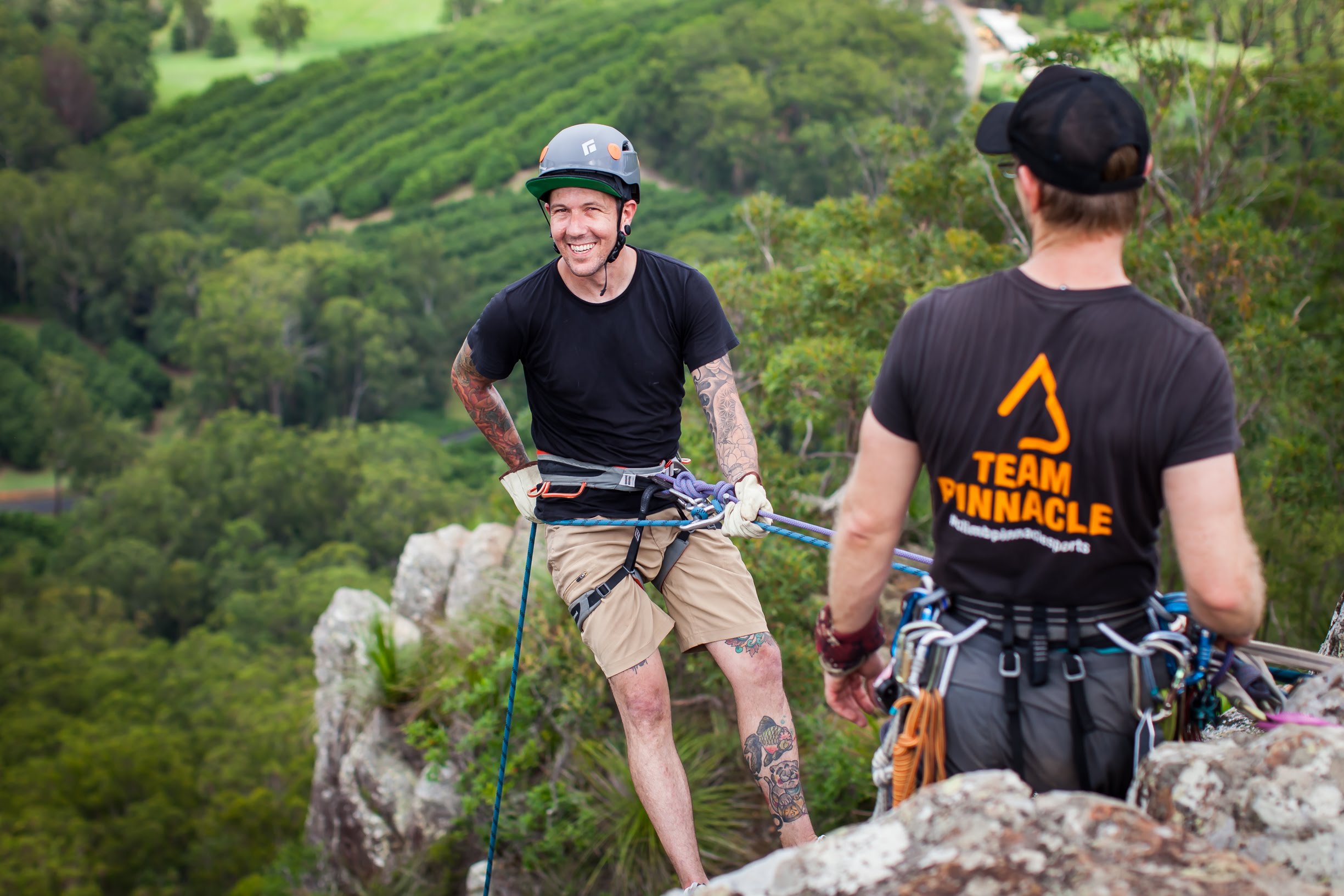
HOW TO BUY CLIMBING SHOES
A well fitting pair of shoes will assist your climbing journey whether it be outside on the rock or indoors. Like all tools there are many options to choose from, we’ve broken the styles of shoes down for you, it may depend on what sort of climbing you’re doing as to the type of shoe you’ll end up with.
The best way to buy climbing shoes is to try them on in store and be fitted by a professional team. Sizes on boxes are great guidelines but until you’ve tried them out on a wall it’s hard to know how they will fit on your feet. Will they bag out in the heel or will you have a snug glove like fit?
If you really get the climbing bug you may end up with multiple styles of shoe. There is not one type of shoe that does all styles of climbing well. You will need to compromise or if you’re fortunate enough go ahead and build a toolbox for all styles of climbing!
STYLE
All Round
A flat shoe is ideal for a beginner but they can also be great options for advanced climbers looking for comfortable multi-pitch or crack climbing shoes. A flat shoe typically has a very stiff sole that offers a good amount of support, providing comfort for all levels of climbers while also helping beginner climbers who have not yet developed a high level of foot strength; the Scarpa Helix is a good example of this. The stiff soles can also make them very good for jamming into crack systems. Another of our most popular models is the Butora Senegi which offers a great balance of comfort and precision for a new climber
Performance
A performance shoe has a slight down turn to the last but does not turn your toes over and under themselves. The down turn enables the user to have a higher level of precision. This style of shoe will also have a larger rubber toe patch which helps with toe hooking. They’re a good option for people doing hard multi-pitches who need a mixture of comfort and performance, or for slab climbing where sensitivity without extreme downturn is necessary. They’re also great as gym shoes that can be worn for extended periods without feeling like your shoes are limiting your ability to send. The Scarpa Instinct VSR and Scarpa Veloce are both excellent examples of this style of shoe.
High Performance
High performance shoes like the Evolv Phantom and Scarpa Furia S are designed to be so downturned that you can almost hook onto holds and pull at them with your feet, perfect for keeping your whole body engaged on overhung routes. When you buy a high performance shoe you’re consciously making a decision to sacrifice comfort for performance (exactly how much comfort should be sacrificed will be discussed later on). A high performance shoe is designed to funnel the majority of contact into the big toe area. This means that you will need a bit of foot strength but the design of the shoe is such that it makes the most out of whatever foot strength you do have. These are not shoes that can be worn for extended periods but, when you’re wearing them, you’ll feel like anything can be a good foot hold.
THE CLOSURE
Laces
Lace-up shoes are good for people whose feet are “non-traditionally shaped” as they allow you to tighten and loosen the shoe with more precision than a velcro or slipper system. This also continues over the shoe's lifespan. Shoes like the Scarpa Vapor Lace (Mens) and (Womens) are a good option for crack climbing, as the lace is less likely to come undone when being jammed into a crack than a velcro strap might be. Their downsides are that they take longer to get on and off, and the laces can be annoying to manage when climbing hard.
Velcro
Most performance shoes come with a velcro strap, partly because it reduces the amount of time it takes to get the shoe off. They’re also great for climbers who get sick of tying knots all the time. Three strap or z strap systems have been introduced which allows more more adjustability on fit.
Slipper
Another good option for crack climbing, slipper style shoes have a very low profile that makes them perfect for jamming into cracks. They’re often quite sensitive and soft, providing a high performance potential.
THE MATERIAL
Leather
Leather shoes should be sized quite tight as they typically stretch up to a full size. If you are climbing multiple times per week you can expect your shoes to be fully stretched after about a month. Leather shoes can be either fully leather or lined leather, with lined leather having a slightly smaller stretch factor.
Synthetic
Synthetic shoes barely stretch at all, so you should size them with that in mind. They will break in a bit and become more comfortable as they mould to the shape of your foot, but the tightness will remain about the same.
Shoes may also be a mixture of both leather and synthetic; like the Scarpa Instinct VSR which has mixed upper. If you are vegan, Pinnacle Sports stocks a range of vegan climbing shoe options. Note some shoes may be fully synthetic but the glues used are animal based. Check out our range here.
THE RUBBER
Shoe rubber varies in thickness and suppleness. Harder rubber will be more durable, give the climber more support (good on long pitchess) on steep vertical climbing. Softer rubber will be more sticky, giving the climber more sensitivity; however the trade off is that this sort of rubber will wear faster.
COMFORT
This is probably the area where there is the greatest disagreement between climbers. Some climbers don’t want any discomfort at all, while others are happy to have a five minute battle every time they attempt to squeeze their blister-covered-feet into their shoes. In terms of performance, a tighter shoe is going to have greater sensitivity on the rock but it’s also going to be more uncomfortable. The line where that discomfort becomes unacceptable pain is different for everyone and it’s up to you how much you’re willing to sacrifice in the pursuit of sendage. It’s important to recognise that too much pain can completely nullify the perceived advantage of a small shoe. It’s also important to recognise that there can be adverse long-term consequences to wearing shoes that are way too small for your feet.
THE FIT
By far the most important thing to consider when buying a new pair of shoes is the fit. No matter how well a shoe has been reviewed, if it doesn’t fit your foot correctly, you aren’t going to enjoy wearing it and you won’t get the most out of it. A high performance, technical shoe with a big air bubble around your heel is going to be useless for heel hooking, and a stiff, flat shoe that rubs against the knuckle of your little toe is going to be very uncomfortable. Fit is the number one thing to think about when buying a new pair of climbing shoes and that’s why it’s so important to try a shoe on before buying it.
LIFESPAN
One of the most common questions we get asked is how long will my shoes last? It’s a loaded question. The rubber on the sole will wear off, it’s made to be sticky! The speed at which it will wear depends on a few different factors including; The number of times climbed per week, the surface that you're climbing on (gyms have textured surfaces which chew the rubber away, as does unsurprisingly sandstone…) and of course technique. If you can hear your feet thumping on the wall it means your shoes are getting a work out as well. Don’t walk around or belay in your climbing shoes either, this will assist in extending their lifespan. Your feet will also appreciate the break.
It is possible to get resoles on climbing shoes, this means less landfill and the upside is that your shoes are already moulded to your foot. The downside is they will need to be sent away to be resoled. Just don’t keep climbing until you’ve put a hole in your shoe - these are often still fixable, but will cost you more. Pinnacle acts as a drop off point for Scotty Dog Resoles, and can help you with this process.
Drop by in store to find the pair that best suits your climbing needs. If it's a first pair of shoes allow at least a half an hour so our expert team can fit you in the best shoe for you! We close at 6pm during the week and 4pm on Saturday and Sunday. Please keep the time required for a great fit in mind as our team has their own climbing and family commitements as well ;)
You can check out the full range of rock climbing shoes here.
Looking for more great reads? Subscribe to our newsletter to stay up to date with the latest climbing tech, crag recommendations and upcoming events.







